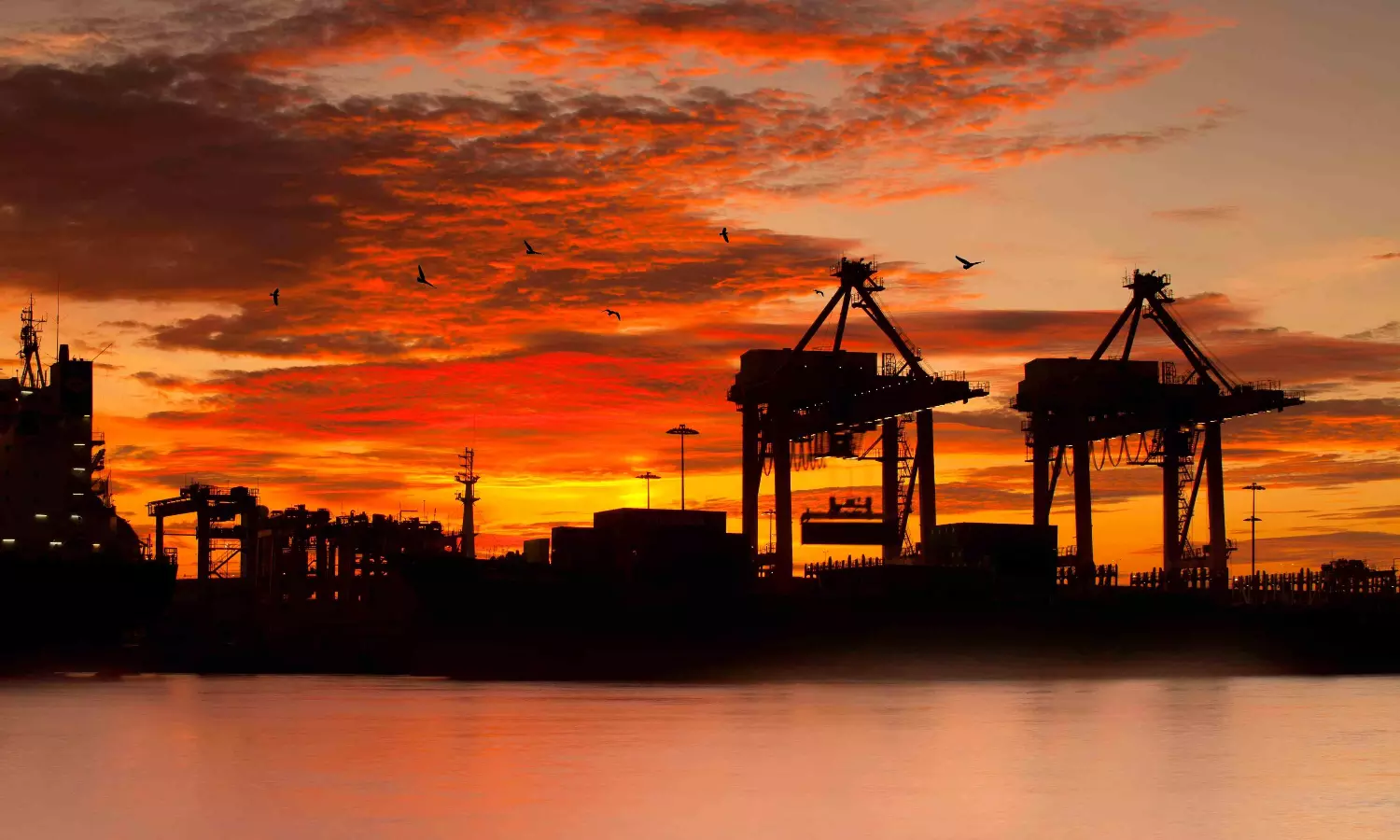Logistics infra: Achilles heel of African trade

The attention and intention with which the ports, terminals and connectivity infrastructure are built and financed in Africa are quite visible right now across its political, economic and regulatory landscape. However, to have AfCFTA implemented effectively, there is a lot more the continent needs to do collectively
On September 22, 2022, UNCTAD (United Nations Conference on Trade and Development) Secretary-General Rebeca Grynspan gave an example of how West Africa already lost a sowing season due to issues in the global distribution of fertilisers including the price rise and the global disruption of supply chains while addressing the annual summit of the Global Maritime Forum in New York.
Even though she was talking about the food availability crisis that the world may face, it also goes to show how Africa is dependent on the maritime supply chain for its economy and food security.
She continued, "Let me finish with one last plea: please help us get the grain and fertilisers out of Ukraine and Russia. We need you. The world needs you. The seas are rough. Let's brave them together."
One of the important impediments to Africa's route of economic progress has been the lack of infrastructure, particularly in the maritime trade and it is visible in the ports and terminals across Africa compared to that in other continents.
Louis Yaw Afful - Executive Director, AfCFTA Policy Network, recently called transport and logistics the Achilles heel for Africa when it comes to fulfilling its trade needs even with the implementation of The African Continental Free Trade Area (AfCFTA).
"If you produce the goods and there is no transport and logistics it is as good as not producing at all. Because there is a need for goods to reach the final destination. There is a great percentage of funding that must go into logistics," he said during the TechCabal webinar in August 2022.
He stressed the need for governments to allocate resources and fund the trade-related infrastructure, especially logistics to improve trade in the free trade area.
"There are two pillars that need great attention to have the trade to be working well under AfCFTA: trade-related infrastructure and trade facilitation. It is about how you finance these infrastructures which include logistics. Logistics is broad and in all the pillars of logistics we are lagging behind." he said.
However, the positive in this situation is that the business community, not just in the continent but also the foreign entities, is well aware of this drawback and investments are trickling in to fill this gap in the last few years.
For example, last year DP World announced a partnership with UK's development finance institution and impact investor CDC Group to invest around $1 billion in ports and logistics across Africa.
"One of the problems in Africa is infrastructure investment. Infrastructure is the obstacle that makes it so expensive for people to receive cargo and deliveries and that's why we are doing something about it with our plans in Africa," noted Sultan Ahmed bin Sulayem, group chairman and CEO, DP World.
Nick O'Donohoe, chief executive officer, CDC, said, If you can't reach the market, you can't sell your goods. And you can be the best in some of these countries, the best producers of goods in the world, but if you haven't got access to a port infrastructure then you are cut off from a large piece of your potential market. Ports don't just serve the individual country, they can serve a region."
For exactly the same reason, ports not only require bigger terminals and extensive handling capabilities but also wider connectivity to the hinterland and in Africa's case to landlocked countries as well.
For example, recently the minister of transport and logistics of the landlocked country Zambia, Frank Tayali spoke about the greenfield railway projects in the country aimed at enhancing the connectivity to its neighbouring countries like Zimbabwe and Mozambique during the Southern Africa Railway Association (SARA) Conference and Exhibition in October 2022.
"We have greenfield projects connecting Nseluka all the way to Mpulungu which gives us access to the Great Lakes region and Kafue in Zambia to Lion's Den in Zimbabwe which gives us the shortest route to the Port of Beira in Mozambique. We also got Livingstone (on Zimbabwe border) to Sesheke (on Nambia border) as well as from Livingstone to Kazungula (on Botswana border) connecting to Botswana," he said in an interview given to Railways Africa Magazine.
He noted that there is a growing consensus among African nations and his country's leadership to increase connectivity.
"We have come to the realisation that we need to make strides to open up and interconnect our continent in order for us to achieve the African free trade area which is very important for us to explore the market within ourselves before we can look beyond," he added.
During the event, he also batted for the uniformity of not only technology but also in terms of the standard of trains running through these countries.
"So that we are able to get a train running all the way from Zambia crossing into Zimbabwe up to the port of Durban in South Africa and that means we may have to look into standardising the type of rail that we are operating," he added.
The consensus among the African political landscape for the logistics connectivity that Tayali mentioned is also visible in the development of new ports and modernisation of the old ones.
For example, since 2018, Benin's Port Cotonou is under the management of the Port of Antwerp International as the Government of Benin entered into a nine-year agreement after realising that it needed a makeover to ensure more volumes and become future-ready. In fact, the contract is now entering into an exciting period of execution after three years of studies, preparations and planning.
"We are building a new terminal for bulk and break bulk operations, we are extending our port basin to create additional container capacity and we are creating a value-added logistics zone. By a couple of years we will be ready for the future of the next 20-30 years," said, Port Cotonou's commercial director Kristof van den Branden, who was recruited via Port of Antwerp for the job, who was speaking at the Breakbulk Europe in May 2022 at Rotterdam.
He spoke of Benin's intention to make it an industrial hub and cited the variety of products that the port may handle in the near future.
"Today there are a lot of basic and low-value products being moved through the Port of Cotonou. On the import side, there are a lot of clinkers, gypsum, raw materials for the cement industry, construction materials, and food items like rice and wheat. On the export side, cotton (Benin is the largest exporter of cotton in Africa), wood, cashew nuts and shea butter nuts. Moving forward there's a whole governmental initiative to make Benin also an industrial hub by developing industrial zones whereby the raw materials that are currently being exported will be processed in Benin and the finished or semi-finished products will be exported to the rest of the world," he added.
Even as the trade world is witnessing optimism, attention and intention being put into the funding of ports and terminal infrastructure or in building rail connectivity into the landlocked countries or inviting foreign expertise to plan, there still seems to be a long road of development and deliverables waiting to happen for African ports before they can become a force to reckon with in the continent.
This feature was originally published in the Nov - Dec 2022 issue of Logistics Update Africa.


